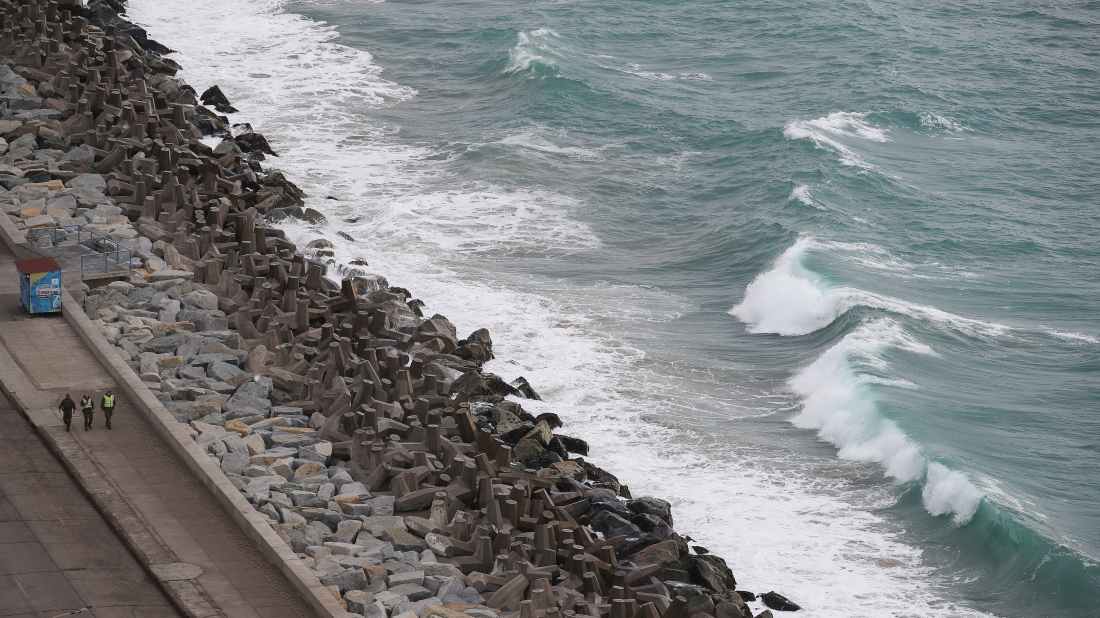Eight killed in mosque explosion in Syria’s Homs during Friday prayers
At least eight people were killed and 18 others injured when an explosion struck a mosque during Friday prayers in the Syrian city of Homs, Syrian aut...

A powerful earthquake struck Russia's Kuril Islands, sparking tsunami alerts and coinciding with the first eruption in 600 years of Kamchatka’s Krasheninnikov Volcano, raising seismic concerns in the region.
Russia's Ministry for Emergency Services reported that tsunami waves were possible in three coastal areas of Kamchatka following a 7.0-magnitude earthquake near the Kuril Islands.
"The expected wave heights are low, but you must still move away from the shore," the ministry said on the Telegram, after the latest seismic activity in the area.
The Pacific Tsunami Warning System and the U.S. Geological Survey both confirmed the quake’s 7.0 magnitude but noted that no official tsunami warning was issued.
Coinciding with the seismic event, Kamchatka’s Krasheninnikov Volcano erupted overnight for the first time in six centuries, according to RIA and Russian volcanologists.
Scientists suggest that both the eruption and the quake could be linked to last week’s major tremor in the region, which also led to tsunami alerts as far as Chile and French Polynesia, and preceded the eruption of Kamchatka’s most active volcano, Klyuchevskoy.
Russian scientists had earlier warned of potential aftershocks in the area. The Kuril Islands form a seismically active chain stretching from Kamchatka’s southern tip.
Olga Girina, head of the Kamchatka Volcanic Eruption Response Team, stated that the Krasheninnikov Volcano last released lava around 1463, give or take 40 years.
"This is the first historically confirmed eruption of Krasheninnikov Volcano in 600 years," RIA cited Olga Girina, head of the Kamchatka Volcanic Eruption Response Team, as saying.
Following the eruption, an ash plume rose to 6,000 metres, with the cloud drifting eastward over the Pacific Ocean, away from populated zones. The volcano, standing at 1,856 metres, has been assigned an orange aviation code, indicating a heightened risk to aircraft.
New York placed the state under emergency measures on Friday as a powerful winter storm brought the heaviest snowfall since 2022, disrupting travel across the north-east of the United States.
In 2025, Ukraine lived two parallel realities: one of diplomacy filled with staged optimism, and another shaped by a war that showed no sign of letting up.
Polish fighter jets on Thursday intercepted a Russian reconnaissance aircraft flying near Poland’s airspace over the Baltic Sea and escorted it away from their area of responsibility.
Russia launched missiles and drones at Kyiv and other parts of Ukraine overnight on Saturday, Ukrainian officials said, ahead of talks on Sunday between President Volodymyr Zelenskyy and U.S. President Donald Trump aimed at ending nearly four years of war.
The United States carried out a strike against Islamic State militants in northwest Nigeria at the request of Nigeria's government, President Donald Trump and the U.S. military said on Thursday.
New York placed the state under emergency measures on Friday as a powerful winter storm brought the heaviest snowfall since 2022, disrupting travel across the north-east of the United States.
Start your day informed with AnewZ Morning Brief: here are the top news stories for the 27th of December, covering the latest developments you need to know.
Thailand and Cambodia agreed to halt weeks of fierce border clashes, the worst fighting in years between the Southeast Asian neighbours, which has included fighter jet sorties, rocket fire and artillery barrages, on Saturday.
Russia plans to modernise its nuclear triad, strengthen ground forces, and develop a universal air defence system as part of its new State Armament Programme for 2027–2036, the Kremlin announced on Friday.
At least 12 people have been confirmed dead and more than 160 are feared dead after a migrant vessel en route to Spain’s Canary Islands capsized off the coast of Senegal earlier this week.
You can download the AnewZ application from Play Store and the App Store.

What is your opinion on this topic?
Leave the first comment